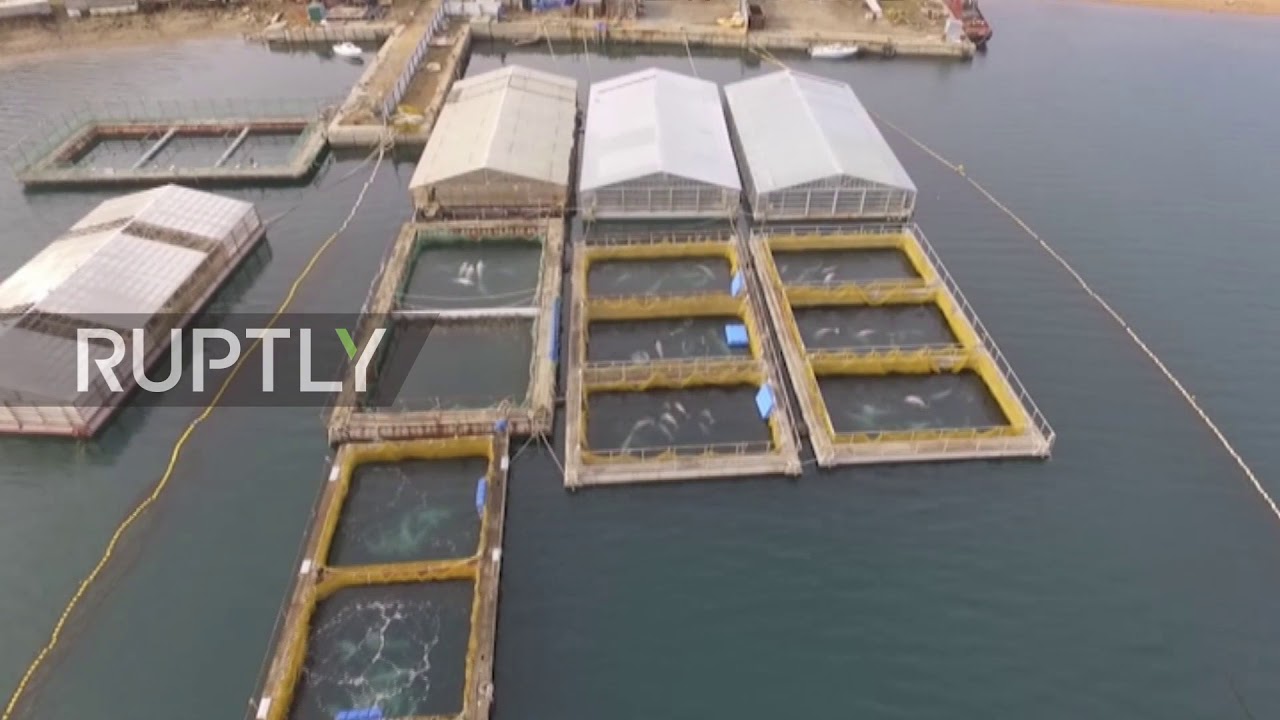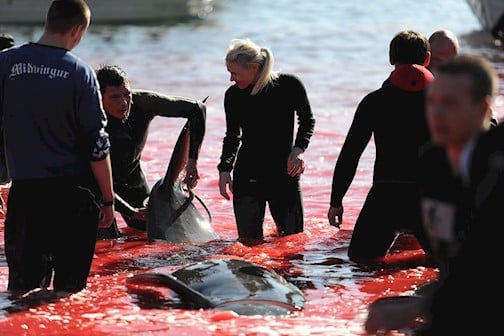At the bottom of the world, in some of the roughest seas, live mysterious killer whales that look very different from other orcas. A mysterious new orca species ‘Type-D’ is discovered by researchers
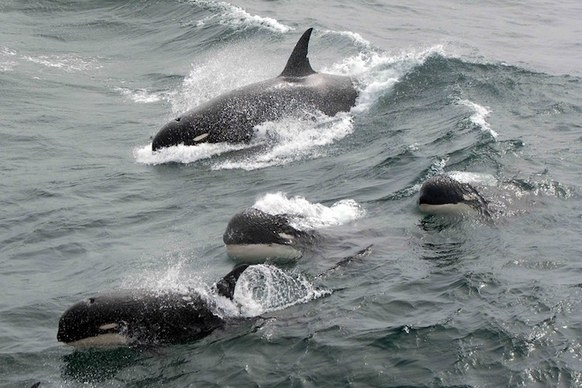
Now, for the first time, scientists have located and studied these animals in the wild.
The orcas are “highly likely” to be a new species, says Robert Pitman, a researcher with the National Oceanic and Atmospheric Administration.
The scientific team made the finding in January about 60 miles off the coast of Cape Horn, Chile, at the very tip of South America—a region with the “world’s worst weather,” Pitman adds.
These orcas, referred to as type D killer whales, were previously known from amateur photographs, fishermen’s descriptions, and one mass stranding—but never encountered in their natural state by cetacean experts.
Unlike the other known types of orcas, they have a more rounded head, a pointier and narrower dorsal fin, and a very small white eye patch.
They’re also several feet shorter in length, Pitman says. (See exclusive underwater video of type D orcas.)
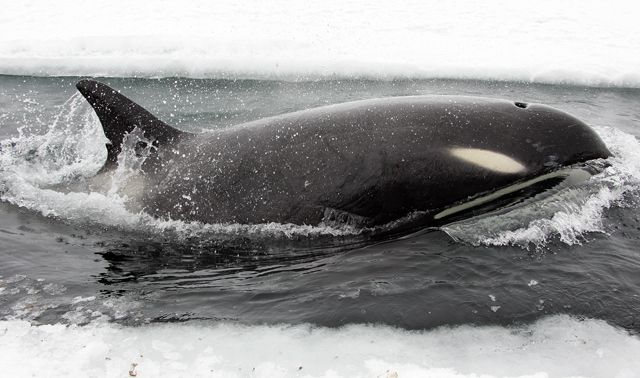
The team, which set sail in the vessel Australis, ventured to an area where fishermen had recently spotted the animals, and dropped anchor for more than a week.
Finally, a pod of about 25 killer whales approached the ship.
The scientists filmed the predators below and above water, and took a small piece of skin and blubber from one, using a common, harmless research technique.
They will soon study the orca’s DNA, which will establish once and for all whether or not it’s a new species. The team is currently waiting on an export permit to take the sample out of Chile.
The orcas congregated about the boat for a couple hours, seemingly curious about these humans and their vessel.
Though they intently inspected a hydrophone the researchers put in the water, the animals did not make any vocalizations.
Photo evidence
Type D orcas were only first recorded when a group of more than a dozen stranded in New Zealand in 1955.

More than half a century later, in 2005, Pitman saw photographs collected by Paul Tixier, a French scientist doing research off a remote archipelago in the southern Indian Ocean known as the Crozet Islands.
The photos clearly showed these animals were the same type of killer whale that washed up way back in 1955. “I looked at the photos and my jaw dropped,” Pitman says. “There they were, 50 years on.”
These orcas have been known to steal fish off the lines of toothfish fisherman near the Crozet Islands and Chile, and sometimes take up to one-third of their catch, Pitman says.
The two researchers collaborated with others using photographs and descriptions to author the first study on type D killer whales, published in the journal Polar Biology in 2010.
But Pitman was still determined to find one in the wild.

“By collecting the first biopsy samples ever obtained on this form of killer whale, Pitman’s expedition [promises to] increase our knowledge on genetics. But also evolution, feeding preferences, and resource partitioning in type Ds, and in killer whales as a whole,” says Tixier.
Who is now a researcher at Deakin University in Melbourne, Australia, an in email interview.
There are, indeed, other “ecotypes” of orcas, some of which may be different species, including four varieties near Antarctica alone.

Type A killer whales look similar to typical orcas (which are found worldwide), but mainly feed on minke whales; type Bs are smaller and many eat seals; type Cs go after fish. (Watch a rare video of young orcas hunting sea turtles.)
But type D killer whales are even more odd in appearance. “This is by far the most different-looking one,” Pitman says.
One or many?
Killer whales are still officially considered to be one species, Orcinus orca, but some of the various types are quite likely to be distinct and deserving of their own scientific name, says John Ford, a researcher with Fisheries and Oceans Canada and the University of British Columbia.
But it requires a formal scientific process, which includes extensive measurements, DNA analysis, and the like.
“There are good grounds for considering other killer whales separate species as well, but where to draw that lines is very difficult,” Ford says.
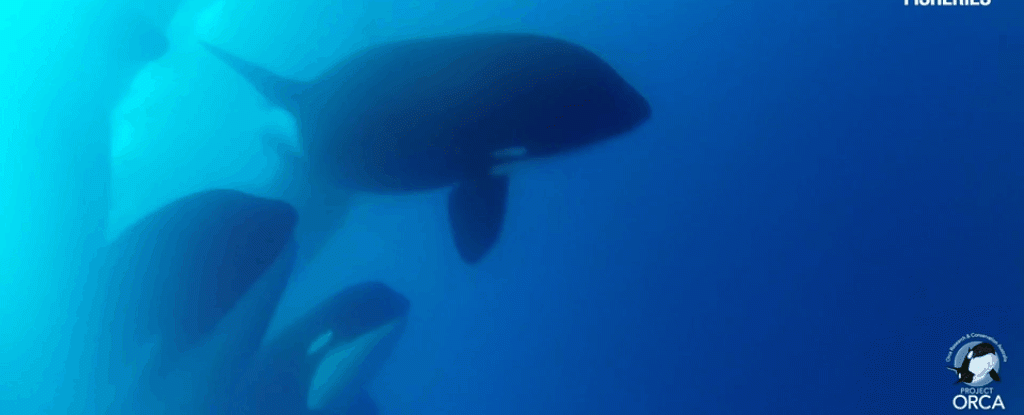
Subantarctic killer whale
Pitman suggests that a good common name for the orcas would be the subantarctic killer whale. That aptly describes their habitat, in the offshore waters near Antarctica—but doesn’t include the coldest waters.
(Related: Read why orcas are in danger due to ocean pollution.)
The region where they are found, between latitude 40 and 60, has some of the most inhospitable weather on the planet, with strong winds and frequent storms that have earned them the nicknames of the “roaring 40s” and the “furious 50s.”
Their choice of home, combined with the fact that they live in the open ocean, explains why the killer whales are so little known.
Check National Geographic’s amazing Type D Killer Whale photo gallery
“If you’re a large animal trying to hide from science, that’s exactly where you’d want to do it,” Pitman says.
Source: National Geographic & Science Alert
Also read: OrcaZine about the Orca type D
Wirde: Odd looking Orcas may be a distinct species

